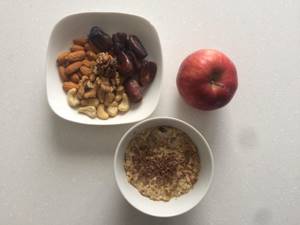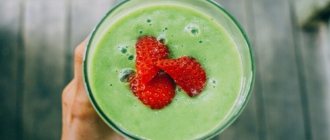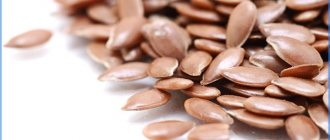Almost any diet involves regular consumption of large amounts of clean, still water. But there is also a separate diet, the so-called water fasting . This is a period during which a person completely refuses to eat and drinks only clean water. In addition to the fasting itself, it is very important to properly prepare for it, and at the end - to properly exit it. Sometimes it becomes a way of life and is practiced several times a year, with varying durations, from a one-day course to several weeks.
This method allows you not only to lose weight, but also to achieve complete recovery; it is even indicated for some diseases. But at the same time, this requires great willpower and determination, as well as a reasonable approach, since in some cases, especially if the period is long enough, it can harm a person and even jeopardize life and health. Therefore, before using this method of losing weight, you need to carefully weigh the pros and cons, and also consult a doctor, since there are a number of diseases for which the use of even one-day fasting is prohibited.
Features of fasting
Before fasting, you have to prepare yourself mentally. A person should be in a good mood, have a positive attitude towards life and enjoy every day. Only the right attitude will help prepare the body for cleansing. The psychological factor plays a huge role in the smooth functioning of all organ systems. If you are in a state of depression, apathy or even anger, you may not expect results in the form of weight loss or rejuvenation. Negative emotions impair the functioning of organs. A state of stress creates a feeling of hunger and a desire to snack. A person needs fasting for physical and psycho-emotional health. Moral purification is implied. The fasting technique involves a gradual transition from the usual diet to restrictions. Correct exit from the program is also important. The main thing is to act consistently, otherwise wrong steps will cause your health to deteriorate. Beginners should not attempt long-term fasting. The body is not able to quickly adapt to such a radical regime. It is better to give preference to short but cyclical experiments. It will take time to get used to changes in metabolism and eating behavior itself.
What diseases does hunger cure?
Proponents of the technique claim that fasting cures a person from a number of ailments:
- Cardiovascular diseases: blood pressure disorders, angina pectoris, thrombosis, post-infarction and post-stroke conditions, coronary artery disease, varicose veins, anemia.
- Weight problems, gout, scurvy, jaundice.
- Diseases of the digestive tract: gastritis, colitis, ulcers, stool disorders.
- Diseases of the respiratory system: asthma, bronchitis, pharyngitis, sinus inflammation, pneumonia.
- Hormonal disorders: diabetes mellitus, goiter, prostate adenoma.
- Diseases of the nervous system: chronic migraine, sleep disorders, neuroses.
- Mental illnesses: depression, schizophrenia, epilepsy.
- Infections: flu, sore throat, smallpox.
- Eye diseases: glaucoma, keratitis, stye.
Is it possible to drink coffee while fasting?
This technique is divided into two types. In the first case, you are allowed to drink water and drinks, in the other - a complete abstinence from liquids.
Drinks help get rid of attacks of nausea, dizziness and dull the feeling of hunger. Drinking coffee is only possible for short-term options. If the goal is to rejuvenate the body and lose extra pounds, then you will have to choose a long hunger strike, giving up liquids.
A day without food
In fact, I fasted from 6 pm on Thursday, all of Friday until 9 am on Saturday. It turned out to be 39 hours. The Thursday evening period passed unnoticed, because on ordinary days I don’t eat after 6.
The hardest thing was to give up my favorite and usual breakfast in the morning. But I planned my day to keep myself busy and think less about food.
Yoga and contrast shower to stay toned. By lunchtime the feeling of hunger had passed. By the evening I felt weak, but I still didn’t want to eat. It said that the day before the food was vegetable and light and there was no experience in fasting. The weakness was overcome naturally - I went to bed by 11 pm.

In order not to forget to drink water, I fill 3 liters in bottles for the whole day. I take small bottles with me on errands.
One-day fasting as training for a longer distance. It expands the boundaries of human capabilities, trains the will and spirit
What is therapeutic fasting
Let us repeat, therapeutic fasting is a voluntary refusal of food in order to improve the health of the body and get rid of the hated kilograms. The so-called velvet fasting according to Ziganshin is very popular among supporters of extreme methods. Another system that became famous was proposed by Paul Bragg. The system includes recommendations for observing fasts and lists of foods that should be abandoned forever. In previous articles, we talked to you about fasting, the author of which is E. Osumi. According to his theory, it was divided into schemes: 16/8, 12/12, 14/10, 20/4, 36, 5/2 hours. But today we are talking about other two types: water and dry.
On the water
Water fasting involves abstaining from food. Drinking the daily amount of water is a prerequisite for this type of diet. Due to the deprivation of the natural function of digesting solid food, the digestive tract begins to cleanse itself. First, feces are removed, then waste and toxins. The intestinal microflora is normalized, since pathogenic organisms are not able to exist in conditions of lack of nutrition.
Long or cyclical courses without food trigger autophagy processes. The cells begin to cleanse themselves. In this case, harmful components are removed, thus explaining recovery from certain diseases. Some adhere to a soda and water fast. The water system of morning fasting by Ishihara Yumi is very popular.
You can lose up to 1 kilogram per day on this diet. But such large numbers for one day are frightening and raise doubts about the ability to maintain the result after leaving the diet.
Dry medicinal
Dry fasting involves complete abstinence from food and water. Fortunately, even the most outspoken fighters against waste and toxins do not advocate using this method for more than two days. It is possible to live without food for some time, but without water, you are more likely to develop dehydration. Water is the force that gives organisms life. We must not forget this simple rule.
Varieties:
- Complete dry fasting - author L.A. Shchennikov. Lasts 7, 9, 11 days.
- Cascade - author V.P. Lavrova.
- Fractional (intermittent) - author S.I. Filonova.
What should water be like during fasting?

The main food product during therapeutic fasting is water. Its preparation and selection should be given special attention:
- Liquids for fasting must be clean. Why? When refusing solid food, the body experiences a huge load - it is necessary to neutralize a large number of toxins and breakdown products in a short time. There is also a fight against pathogenic microorganisms. For this reason, we need precisely purified liquid, which will not cause an increase in the amount of harmful substances, but, on the contrary, will start the processes of neutralization and removal. The presence of foreign chemical elements in water negatively affects overall well-being.
- We use soft water. The high concentration of salts in the composition forces the body to expend energy on their elimination. In addition, they reduce the liquid’s ability to dissolve toxins and waste. Hard water is a sponsor of unpleasant side effects and less pronounced results of fasting.
- We “cook” soft, clean melt water. We follow simple tips and get a liquid that is ideal for fasting. We prepare tap water in advance. Leave it in the container overnight at room temperature. In the morning, without shaking it at all, pour it into another container, but with a wide neck. Place it in the freezer for 5-7 hours. As a result, some of the liquid freezes. We pour out everything that did not have time to set during this time. Melt the ice and heat to a pleasant room temperature. Melt water is great for a hunger strike.
- To prepare structured water, we also use liquid from the tap. Pour into a jug and leave for 8-10 hours. Carefully pour without disturbing the sediment and bring to a boil. The next step is to freeze the liquid for 7 hours. Next, drain the unset water, melt the ice and use it for its intended purpose.
- If fasting lasts 1 or 3 days, then you must use distilled water.
- The water used for fasting should have a pleasant taste. To enrich the liquid, you can additionally pass it through a special magnetic funnel or place a magnet in the vessel for a couple of hours. Ready-made water not only tastes better, but also copes much better with harmful deposits.
Benefits and harm to the body
Let's talk about the benefits of fasting:
- Respite for the gastrointestinal tract. Due to the abundance of food, a person often does not control his appetite. Overeating often occurs, so rest for the digestive system is also necessary.
- Metabolic restructuring. During a hunger strike, the body uses up its own internal energy reserves. Fat reserves begin to decrease, which leads to weight loss.
- Longevity. The rejuvenation effect is achieved through the effects of hunger at the cellular and molecular levels.
- Cure various diseases, the list of which we provided above.
It turns out that the technique is useful for weight loss, rejuvenation and healing. But, do not forget about the other side of the coin.
Flaws:
- The risk of muscle loss increases. During a hunger strike, the body does not immediately begin to break down fats. Glucose and proteins are the first to be shot. Long-term refusal of food leads to muscular dystrophy.
- Poisoning with ketone bodies - fat breakdown products. With a lack of food, the level of glucose in the blood decreases - a lack of insulin develops. Fats cannot undergo complete oxidation under such conditions. This is how acidosis occurs, the main symptom of which is the smell of acetone from the oral cavity. In this case, we can talk about increasing intoxication.
- Appetite disorders. Long-term refusal of food results in the appearance of an uncontrollable feeling of hunger. It becomes difficult for a person to control his appetite, and regular overeating begins.
- Modern doctors argue about the accumulation of toxins. They claim that the lymphatic, urinary and circulatory systems cope with their own functions without any additional techniques.

How to fast properly
Before a fasting diet, it is better to let the body get used to it by making the diet lighter. All fatty foods, animal proteins, baked goods and sweets are completely excluded from the menu. You should eat fruits and vegetables, but without overeating. To fast properly, you should familiarize yourself with the general recommendations.
How long can you fast without harm to your health?
Refusing food for more than three days can cause severe deterioration in health. Prolonged fasting promotes the breakdown of proteins and glucose found in the muscles. Muscular dystrophy develops.
An additional negative effect is the lack of nutrients and vitamins. The functioning of all body systems is disrupted. Although therapeutic fasting is a health program, it must be used very carefully.
How to prepare
Preparation in duration should take half of the total fasting time, and at best be equal. The preparatory stage involves a gradual reduction in the amount of food eaten. The hunger strike process is divided into three stages.
First stage
At the first stage, food arousal increases. It lasts about two days. An unprepared psycho-emotional background causes the development of anxiety. This is more typical for beginners.
The first stage is characterized by attacks of hunger, dizziness, stomach pain, rumbling, increased sensitivity to food, and worsening mood. A person begins to get irritated by any mention of food or the sight of dishes.
Second stage
The phenomenon of ketoacidosis increases and lasts about a week. There is a “metallic” taste in the mouth, the tongue becomes covered with a white coating, and hunger is dulled. Exacerbation of chronic diseases often occurs. It is recommended to refrain from physical activity and stay in the fresh air longer.
Third stage
Adaptation to the lack of food occurs. Clinical manifestations of diseases disappear. Daily weight loss is about half a kilogram.
Contraindications
Before you start fasting, make sure that you have no obvious contraindications, so as not to aggravate the disease:
- severe exhaustion;
- malignant diseases;
- acute coronary heart disease;
- organic heart and kidney diseases;
- acute tuberculosis;
- diabetes;
- Graves' disease (thyrotoxicosis);
- blood diseases;
- infectious polyarthritis.
Take the issue of fasting seriously: fasting is a serious and sometimes unbearable burden on the body. Be sure to consult your doctor to avoid harm.
Therapeutic fasting at home
At home, it is recommended to try a trial refusal to eat for 34 hours, no more than once a week, on certain days. A systematic approach will help increase the number of days to three or more.
Daily allowance
Avoiding food for one day is the safest option. A daily diet will allow the organs of the digestive system to rest and allow the microflora to recover.
Recommendations:
- Go on a fast on the weekend, giving up heavy food in advance. Try to drink more.
- Take a bath, shower. Walk more.
- Periodic practice will help get rid of headaches and dizziness.
- At the end of the program, it is recommended to prepare salads from carrots, cabbage, apples and raisins. You can season it with lemon juice.
- Keep for no longer than 24-36 hours
Three-day
The stress from the three-day course is already greater than from the previous option. It is better to start it after a one-day fast.
Recommendations:
- Give up heavy meals for a week. For three days, eat plant foods, and on the day you start the diet, do a cleansing enema.
- Take frequent baths and showers. Drink more clean water.
- Listen to your own well-being. If it’s difficult to complete the course, give up the idea.
- You need to exit the diet gradually, without overeating.
Seven days
Week-long fasting has therapeutic purposes. During this time, self-destruction of diseased unnecessary components of cells and tissues occurs, and the regeneration process begins.
Recommendations:
The preparatory stage should take at least two weeks. During this period, animal products, alcohol and sweets are excluded. In addition to cleansing the intestines, cleansing the liver is required. You can take a course of special medications.
Preparation
The first and most important thing is attitude. The purpose of fasting is the conscious cleansing and healing of the body, the transition to a high-quality standard of living. After a day on the water, you gain pride in your own willpower. If you are fasting for the first time, start with one day.
To avoid headaches, a couple of days before fasting, exclude: alcohol, fatty foods, fast food and overeating at night. Choose a day without running around and solving important tasks. Weekends are suitable, when you can take a nap during the day to save energy.
The day before the fast, I do a yoga cleanse with salt water. For me it is preferable to laxatives and enemas. To each his own, but it is advisable to cleanse the gastrointestinal tract so that during fasting there is no intoxication from waste and toxins.

My diet the day before fasting. Oatmeal with water for breakfast, nuts, dates and fruits for a snack. At 6 pm, a portion of steamed buckwheat.

Tuna salad for lunch
Planning the timing, time and location of the fast is as important as the fast itself.
Breaking out of fasting
Entering a fast and sticking to it is not an easy task. But it is even more difficult to get out of it correctly. The lost kilograms will partially come back, but a competent exit will help reduce their amount.
General recommendations:
- on the first day you need to stick to a juice diet - drink only juices;
- on the second day, consume grated fruits;
- the menu for 3-4 days will be supplemented with soups and cereals;
- after a week you can eat nuts and proteins;
- Further, a dairy-vegetable diet is recommended.
Fractional nutrition and small portions
Try to eat small portions throughout the day – 5-6 times. The intervals between meals should not exceed three hours. Fractional meals in small portions are the main rule for overcoming long-term hunger.
Vegetable and fermented milk foods
After long fasts, it is recommended to adhere to a dairy-vegetable diet. Fermented milk products should be added to the diet after five days.
Compliance with time intervals
Compliance with time frames is a very important point. The longer you refuse food, the longer the recovery period will be. Even after a short-term fast, it will take several days to eat a recovery diet.
How to avoid going hungry
Hunger is not all that a person experiences when refusing food. Fatigue, weakness, decreased performance and physical activity will become indispensable companions. For these reasons, many people get frustrated and quit what they started. In order to pull yourself together in time, it is recommended to remember what motivated you in the first place. A small amount of water will help dull the feeling of hunger. You should take your mind off thoughts about food: take a walk, do what you love, do breathing exercises. Anything, but do not allow yourself to become overtired.
General information
Short, that is, one-day fasting, was practiced in ancient times.
For example, this was done by Socrates, who believed that food must be seasoned with hunger. Such “treatment” was also practiced by ancient doctors, who were convinced from experience that hunger can be treated. In fact, there is a lot of common sense in this thesis, since modern people are prone to overeating. Short daily fasting is very beneficial for the body. It makes it possible to cleanse it, stimulate the function of the immune system, keep the body in good shape and even cure some diseases. And even if a person fasts one day a week, then with the right approach to this process, such a system will make it possible to obtain a tangible effect. how to properly fast for 1 day, how to recover from fasting , and how to tolerate a 24-hour abstinence from food correctly.
Expert opinion
In the 21st century, weight loss supporters come up with a lot of things. Refusal to eat is not the best way to fight excess weight. He can't do it
It’s easy to improve the body’s health, but it’s easy to put a person’s health and even life at risk.
Food restrictions occur only for therapeutic purposes: for metabolic disorders, problems with the digestive system, or after operations. Such activities are carried out exclusively in a hospital setting. The patient must be monitored around the clock by qualified physicians.
Treating diseases is the job of doctors, not homeopaths, chiropractors and adherents of pseudoscientific theories. Self-medication is dangerous. For those who want to use hunger to lose weight, it is better to contact a competent nutritionist. Weight should be reduced gradually and without harm to health. Do you have a desire to rejuvenate? Then you should go to cosmetologists. They are the ones who are able to select the right cosmetic preparations, vitamin courses, or refer you for hardware therapy.
And for those who want to try to endure a hunger strike for preventive purposes, it is better to start preparing a balanced diet, join a gym and choose a good doctor who will be responsible for the patient’s health during the period of weight loss.
Consequences of wrong exit
It doesn’t matter whether you fast with water or without it, the wrong way out in both cases threatens to worsen existing diseases or create new ones. Ignoring the rules and abruptly returning to the previous diet can cause negative consequences:
- volvulus;
- problems with urination;
- joint pain;
- decreased pancreatic function;
- exacerbation of gastritis and pancreatitis;
- the formation of ulcers on the gastric walls;
- intestinal diseases;
- the occurrence of gastric erosion.











